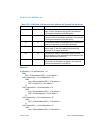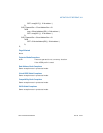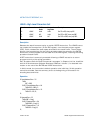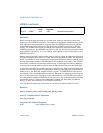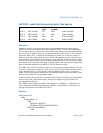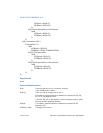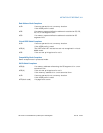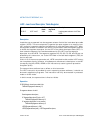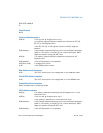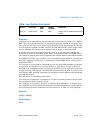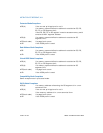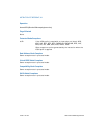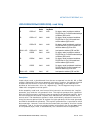
3-544 Vol. 2A LLDT—Load Local Descriptor Table Register
INSTRUCTION SET REFERENCE, A-M
LLDT—Load Local Descriptor Table Register
Description
Loads the source operand into the segment selector field of the local descriptor table
register (LDTR). The source operand (a general-purpose register or a memory loca-
tion) contains a segment selector that points to a local descriptor table (LDT). After
the segment selector is loaded in the LDTR, the processor uses the segment selector
to locate the segment descriptor for the LDT in the global descriptor table (GDT). It
then loads the segment limit and base address for the LDT from the segment
descriptor into the LDTR. The segment registers DS, ES, SS, FS, GS, and CS are not
affected by this instruction, nor is the LDTR field in the task state segment (TSS) for
the current task.
If bits 2-15 of the source operand are 0, LDTR is marked invalid and the LLDT instruc-
tion completes silently. However, all subsequent references to descriptors in the LDT
(except by the LAR, VERR, VERW or LSL instructions) cause a general protection
exception (#GP).
The operand-size attribute has no effect on this instruction.
The LLDT instruction is provided for use in operating-system software; it should not
be used in application programs. This instruction can only be executed in protected
mode or 64-bit mode.
In 64-bit mode, the operand size is fixed at 16 bits.
Operation
IF SRC(Offset) > descriptor table limit
THEN #GP(segment selector); FI;
IF segment selector is valid
Read segment descriptor;
IF SegmentDescriptor(Type)
≠ LDT
THEN #GP(segment selector); FI;
IF segment descriptor is not present
THEN #NP(segment selector); FI;
LDTR(SegmentSelector) ← SRC;
LDTR(SegmentDescriptor) ← GDTSegmentDescriptor;
Opcode Instruction 64-Bit
Mode
Compat/
Leg Mode
Description
0F 00 /2 LLDT r/m16 Valid Valid Load segment selector r/m16 into
LDTR.



